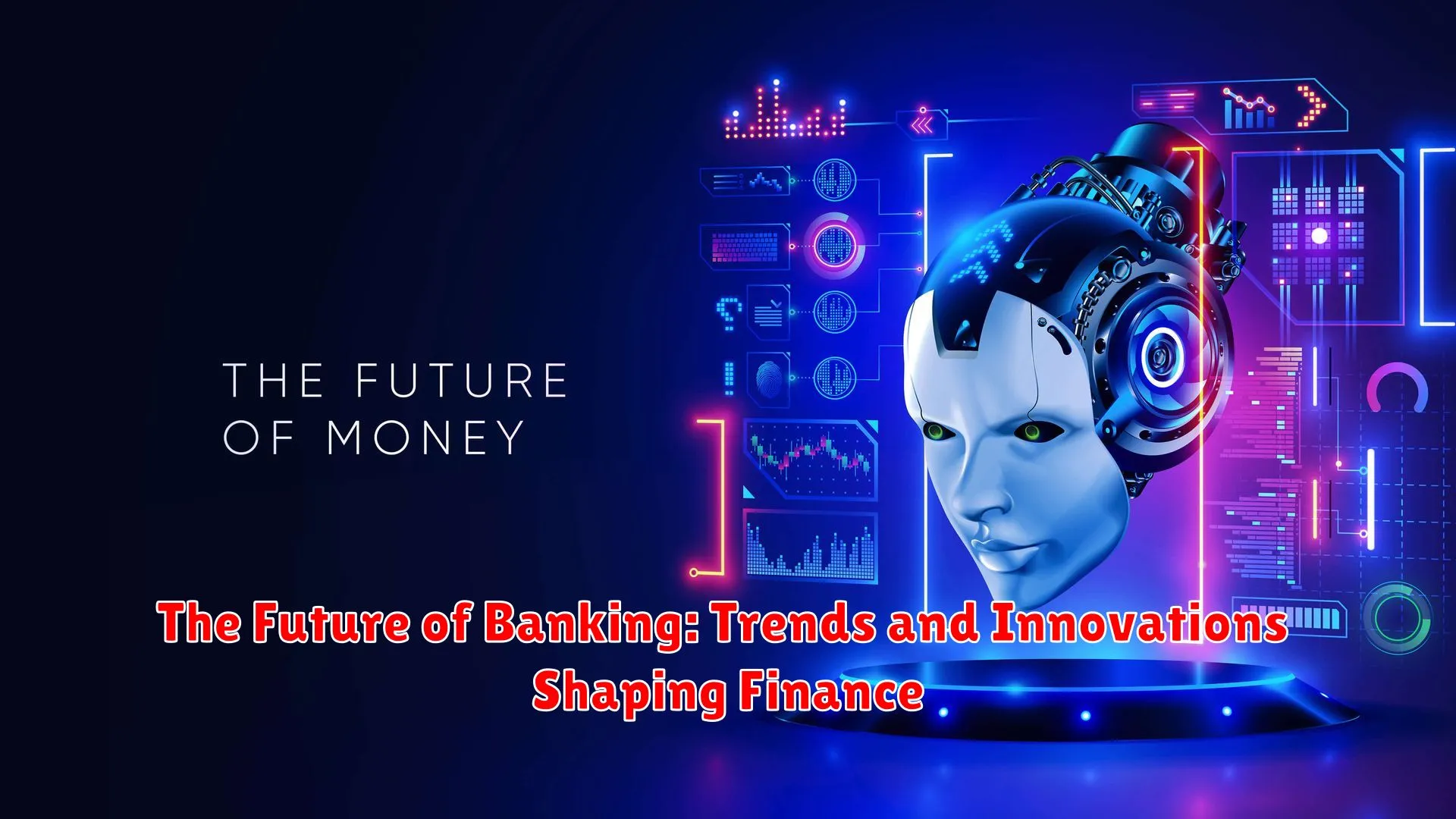Explore the cutting-edge innovations and emerging trends that are revolutionizing the banking industry in our latest article, “The Future of Banking: Trends and Innovations Shaping Finance.”
The Rise of Digital Banking

In the dynamic landscape of modern banking, one of the most significant trends shaping the industry is the rapid rise of digital banking. This transformation has been fueled by technological advancements, changing consumer preferences, and the need for more convenient and accessible financial services.
Digital banking refers to the shift from traditional brick-and-mortar bank branches to online and mobile platforms that offer a range of banking services. With the widespread adoption of smartphones and internet connectivity, customers now have the flexibility to manage their finances anytime, anywhere.
Mobile banking apps have become a cornerstone of digital banking, allowing users to check account balances, transfer funds, pay bills, and even apply for loans with just a few taps on their smartphones. This convenience has reshaped the way people interact with their money and has set new expectations for the banking industry.
Furthermore, the rise of digital-only banks has disrupted the traditional banking model by offering branchless, fully online services. These banks leverage technology to streamline operations, reduce costs, and provide innovative products tailored to the digital-savvy consumer.
As digital banking continues to evolve, financial institutions are investing heavily in cybersecurity measures to protect customer data and ensure safe transactions in the digital realm. The convenience and efficiency of digital banking are undeniable, but cybersecurity remains a critical concern in an increasingly interconnected world.
Overall, the rise of digital banking represents a fundamental shift in the way people manage their finances and interact with financial institutions. This trend is expected to continue shaping the future of banking, driving further innovation, and providing customers with more personalized and convenient services.
Impact of Blockchain and Cryptocurrencies

Blockchain technology and cryptocurrencies are fundamentally reshaping the landscape of banking and finance. The impact of these innovations is profound, influencing various aspects of the financial sector.
1. Enhanced Security and Transparency
One of the key impacts of blockchain in banking is the enhancement of security and transparency. The decentralized nature of blockchain ensures that transactions are secure and immutable, reducing the risk of fraud and unauthorized activities.
2. Efficient Cross-Border Transactions
Cryptocurrencies have revolutionized cross-border transactions by providing a faster and more cost-effective alternative to traditional banking systems. With blockchain technology, international transactions can be processed in real-time, bypassing intermediaries.
3. Disruption of Traditional Banking Models
The rise of cryptocurrencies and blockchain has challenged traditional banking models by offering decentralized financial services. This disruption has prompted banks to innovate and adopt blockchain technology to stay competitive in the evolving financial ecosystem.
4. Financial Inclusion and Accessibility
Blockchain technology has the potential to improve financial inclusion by providing access to banking services for unbanked populations. Cryptocurrencies can serve as a gateway for individuals who do not have access to traditional banking systems, empowering them to participate in the global economy.
Personalization in Banking Services

In the ever-evolving landscape of banking services, personalization has emerged as a key trend that is reshaping the industry. Banks are increasingly leveraging technology to tailor their services to meet the unique needs and preferences of individual customers.
One of the main aspects of personalization in banking services is the use of data analytics and artificial intelligence. By analyzing customer data, banks can gain insights into spending patterns, financial goals, and behavior, allowing them to offer personalized recommendations and solutions.
Moreover, personalization extends beyond product recommendations to the overall customer experience. Banks are investing in user-friendly interfaces, customizable features, and personalized communication channels to enhance customer satisfaction and loyalty.
Through personalization, banks can provide tailored financial advice, personalized investment options, and customized service packages, ultimately creating a more engaging and efficient banking experience for customers.
Security Challenges and Solutions

In the rapidly evolving landscape of banking and finance, one of the most crucial aspects that institutions must address is security. As financial technologies advance and digital transactions become predominant, the industry faces various security challenges that need to be effectively mitigated.
1. Data Breaches and Cyber Threats
The increasing volume of sensitive data stored by banks makes them prime targets for cybercriminals. Data breaches can result in financial losses, damaged reputation, and compromised customer trust. Implementing strong encryption protocols and conducting regular security audits are essential to protect against cyber threats.
2. Identity Theft and Fraud
Identity theft remains a significant concern in the banking sector, with fraudsters using stolen information to conduct unauthorized transactions. Banks need to leverage biometric authentication and multi-factor authentication methods to verify customer identities securely.
3. Compliance and Regulatory Challenges
Complying with regulatory requirements and data protection laws presents a continuous challenge for banks. Developing comprehensive compliance programs and staying updated on the latest regulations are vital to avoid penalties and maintain trust with stakeholders.
4. Emerging Technologies and Vulnerabilities
While innovations such as blockchain and AI-powered security systems offer significant benefits, they also introduce new vulnerabilities. Banks must conduct thorough security testing and collaborate with cybersecurity experts to address potential risks effectively.
By proactively addressing these security challenges, banking institutions can enhance customer confidence, safeguard sensitive information, and adapt to the dynamic landscape of finance.
The Role of AI in Financial Services

Artificial Intelligence (AI) is revolutionizing the financial services industry, reshaping how banks and financial institutions operate. With the unprecedented amount of data generated daily, AI plays a crucial role in enhancing customer experience, optimizing operations, and managing risks.
Customer Experience: AI-powered chatbots provide immediate customer support, personalized recommendations, and streamlined account management. These virtual assistants offer 24/7 assistance, resolving queries efficiently and enhancing customer satisfaction.
Operational Efficiency: AI algorithms help banks streamline processes such as loan approvals, fraud detection, and risk assessment. By automating routine tasks, AI reduces human errors, accelerates decision-making, and cuts operational costs.
Risk Management: AI models analyze extensive datasets to detect anomalies, predict market trends, and assess credit risks. This proactive approach enables financial institutions to identify potential threats, mitigate risks, and strengthen their security measures.
As the financial landscape evolves, embracing AI technologies will be essential for banking institutions to stay competitive, improve services, and adapt to changing consumer needs.
Conclusion
As we look ahead, the future of banking is undeniably being shaped by innovative trends such as digital banking, artificial intelligence, and blockchain technology. Embracing these advances will redefine the financial landscape and enhance customer experiences.

